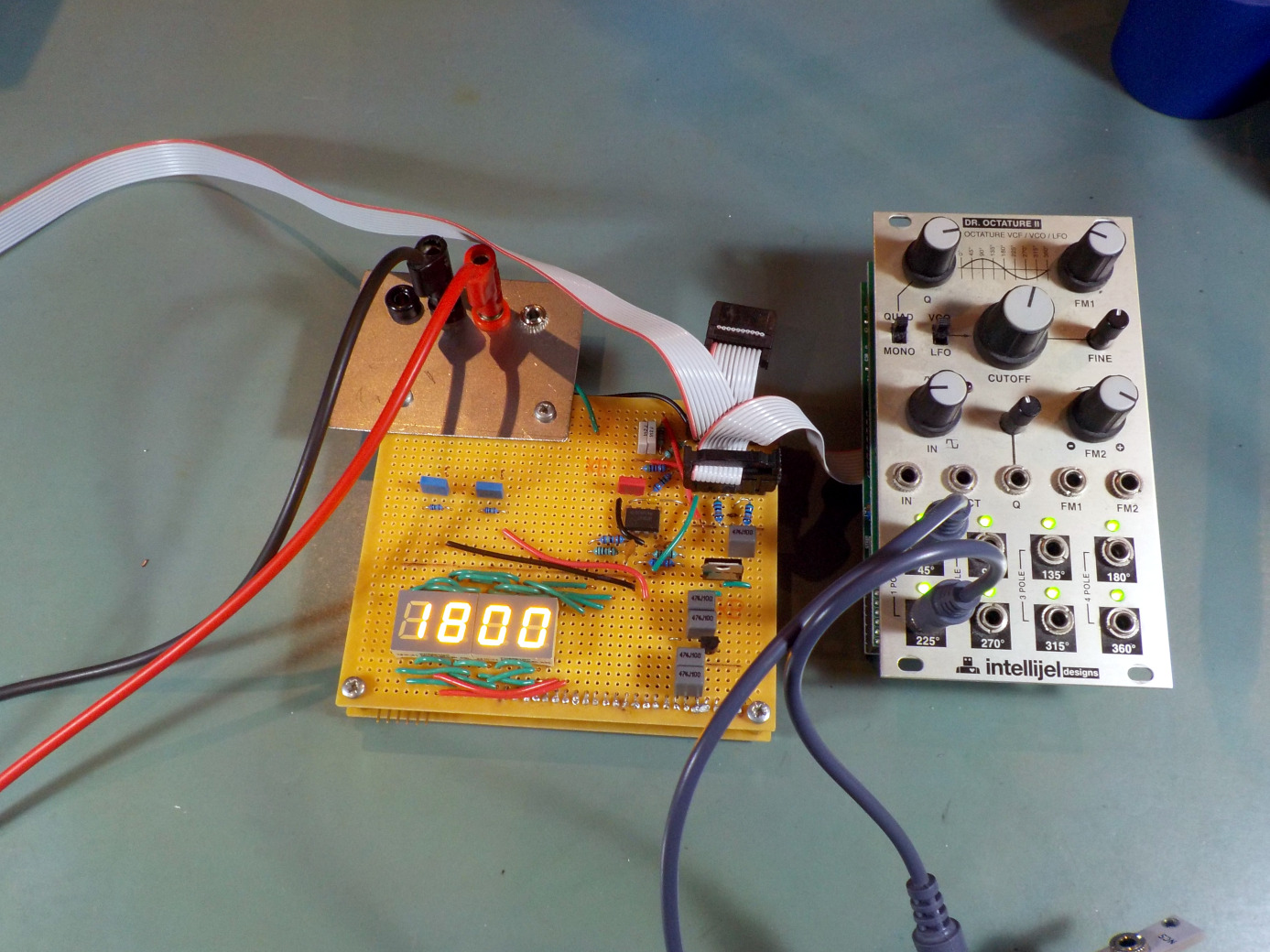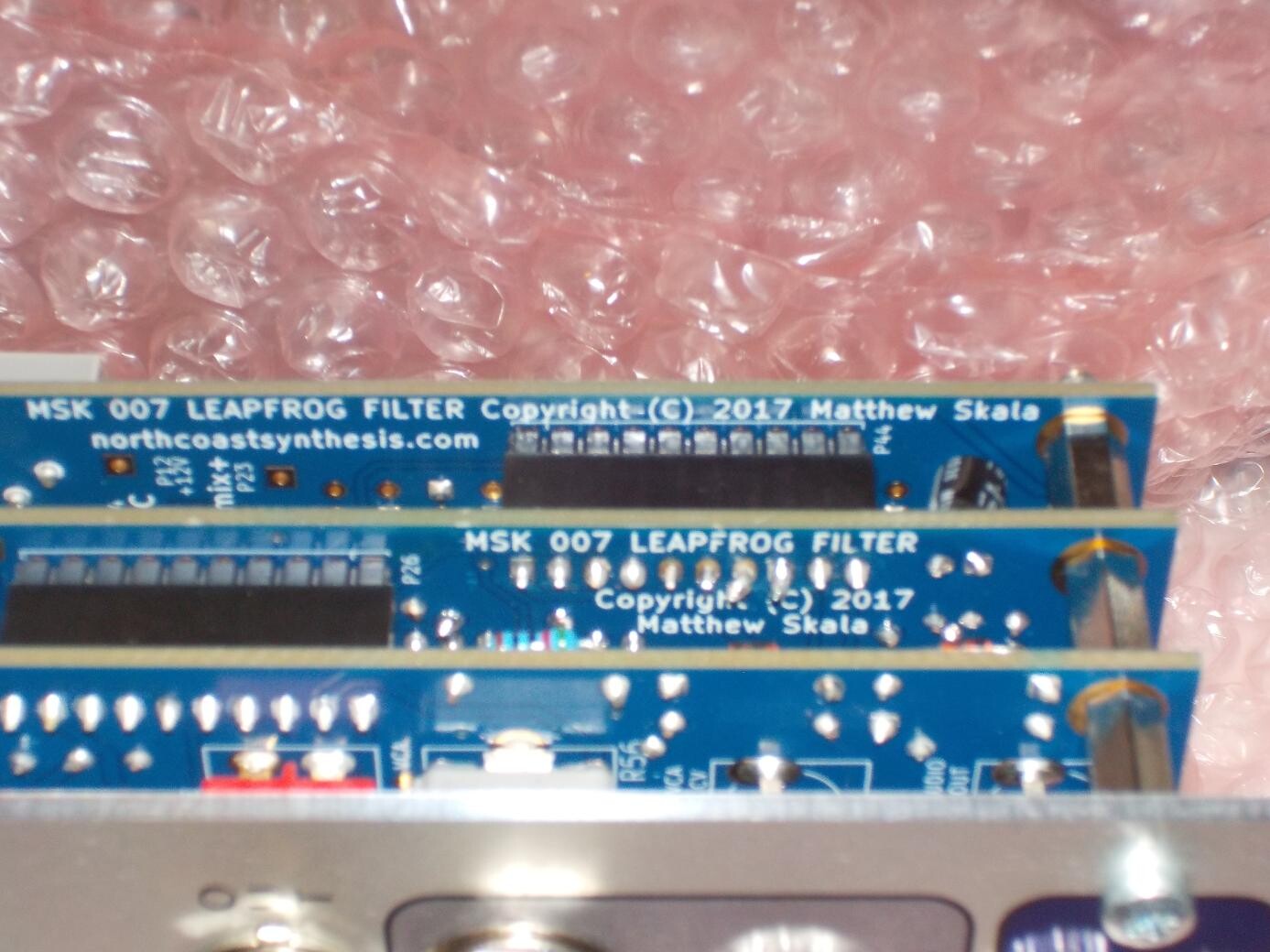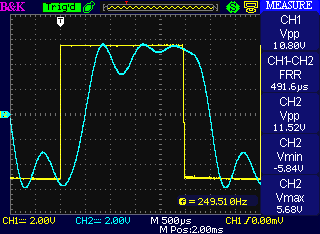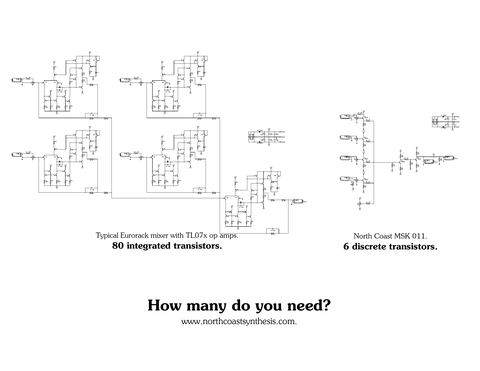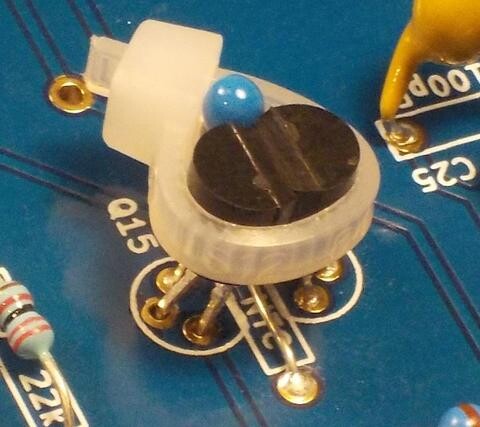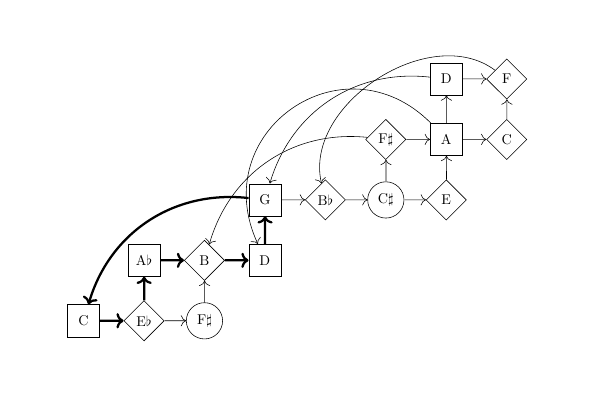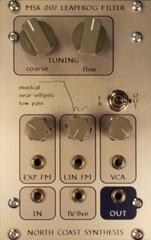tag "MSK 007"
Building a PIC24F phase meter
Adjusting an MSK 007 Leapfrog VCF to its best possible operation involves a tricky process of feeding in a 740Hz sine wave and measuring phase differences between different test points. I also had reason to measure phase differences in my recent experiments on recognizing fake coins. Although my oscilloscope has a mode for measuring phase differences that works well enough, it can be annoying to use, and I thought it'd be a fun project to build a better tool. READ MORE
Build your own commercial module part 2: design and development
Once you have a clear idea of what commercial module you're trying to build, the design concept as described in the first part of this article series, you face the task of turning that concept into a design as such: an electronic circuit with all the details specified so that it can be manufactured on a commercial basis, with all the necessary side items like the layout of a printed circuit board, information on where to get all the parts, physical shapes of things like panels, and so on. This kind of design work is critically important to the success of the product, but it also demands a lot of technological skill, so it's often the stage where it makes sense to bring in a consultant to help. READ MORE
Fat sounds and thick pads
From time to time we hear people claim that one synthesizer sounds more "fat" than another. For the sound to be fat is supposed to be a good thing. This is often cited as an advantage of analog synths over digital; or of one analog synth over another. Somehow it always seems to be the most expensive equipment that sounds fattest. READ MORE
B-stock Leapfrog available
UPDATE: This item has been sold and is no longer available. I'm leaving the Web log posting online for historical interest. READ MORE
Frequency, latency, and uncertainty
Some wigglers want "fast" envelopes that will turn a signal on and off without any delay and without any perceptible clicking sound. Some wigglers want spectral effects, like frequency shift or vocoding, without any latency between the input and output. Some wigglers just want accurate pitch tracking of external inputs. All of these wigglers are doomed! None of those things can ever work perfectly. But the funny thing is that they're all doomed for the same reason. There is a fundamental principle that limits the performance of all these seemingly different things, and I'll try to explain the connection in this posting without resorting to any particularly complicated math. READ MORE
News, reviews, and demos
We're coming up to the end of the first quarter of 2018, and I'm happy to note that based on the current projection, it looks like the company will actually have a profit this quarter - probably about $10. (Edit: Well, not quite. The quarter ended about $6.50 in the red. Still the best quarter on record, though.) Even if sales continue to increase, it'll still take a long time to pay back the losses of previous quarters, and since I'm living on savings now with no real income since Fall 2016 and the company owes me personally a few tens of thousands of dollars, I'm conscious of needing to keep pushing for more sales at North Coast if I'm to stay in business at all, continue releasing new modules, and keep up activities like this Web log for which I don't actually get paid. よろしくお願いします, as we say in Japanese; I hope for your favour. READ MORE
Ribbet!
The Leapfrog VCF does not actually go "ribbet," at least not without some effort. But after being told by one friend I showed it to that most people don't want to make real music with their modulars but just want something that goes "uuuuuuuuuuuLAAAAAAAAAAAAARGH" (which, let's face it, is true) I've added a demo highlighting that. Uulargh? Yeah, we've got this. READ MORE
Totally tubular
It's just one thing after another with the Leapfrog. I'd been hoping to have them for sale by now, and I am getting close to that point. I actually have the stock of the first batch on hand and ready to sell now. But there's still a fair bit of writing to do on the manual, final checks to make sure all the drawings are up to date, a press release to write, and so on. I'm working on an ambitious demo track with about 20 multitracks of different instrument sounds all made with the Leapfrog, and that's taking longer than I had planned, but I'm learning a lot both about the Leapfrog and about synthesis in general doing it, so I thought it would be fun to go through one of the patches I'm using. The score calls for (General MIDI) "tubular bells"; here's my take on a sound something like tubular bells made with the Leapfrog, and some notes on making bell sounds in general. READ MORE
Temperature compensation with NTC thermistors
The panel contractor says they dispatched the first production batch of MSK 007 Leapfrog VCF panels to me on Friday, and those are the last remaining physical items needed before I can launch the module; so I'm still hopeful that I can aim for a launch by the end of the month. That means I need to finish up the last few documentation items; one of them is a description of the exponential converter temperature compensation circuit, and that's an interesting enough item to be worth a Web log posting of its own. READ MORE
The Celebrated Leaping Frog
I've spent most of this week working on the second and third prototypes for the Leapfrog VCF. I'm hoping to have this product available for sale by the end of the month - maybe in time to have some kind of spooky Halloween tie-in for the launch. READ MORE
Nucleosynthesis
Here's a diagram of something called the CNO process, encompassing many of the nuclear reactions by which stars shine. READ MORE
